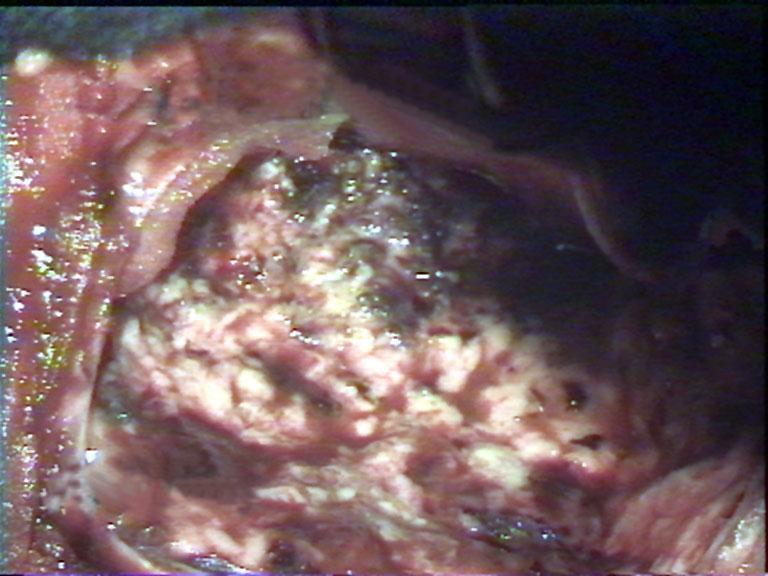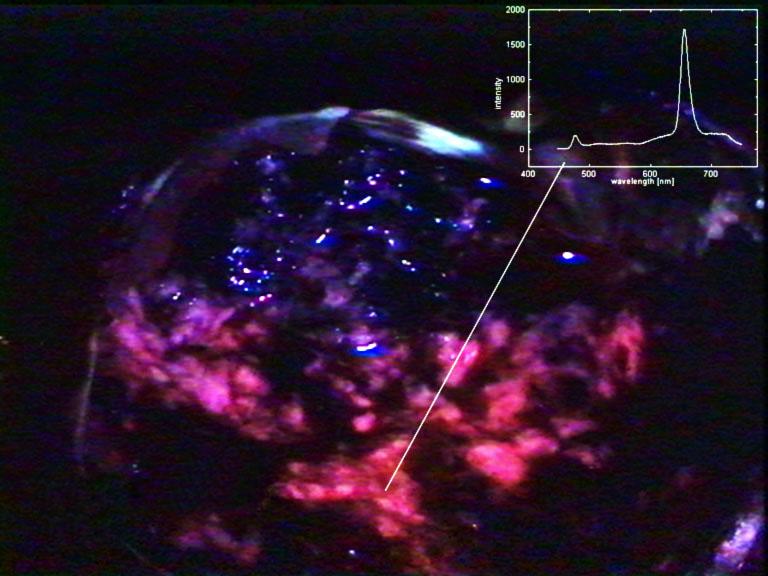Photodynamic Therapy and Diagnosis (PDT and PDD)
National FWF research grant of Prof. Dr. Herwig Kostron (University Clinic of Neurosurgery) 1998-2001, PhD thesis of Dr.Anderas Zimmermann.
In order to enhance tumor removal and prolong survival of patients suffering from malignant brain tumors (e.g. diffusely infiltrating tumors such as Glioblastoma), we employ a combination of intraoperative Photodynamic Diagnosis (PDD) and fluorescence guided tumor resection followed by intraoperative photodynamic therapy (PDT) in a phase II trial.
PDT is administered with red light (at 652 nm) by the second generation photosensitiser meta-Tetrahydroxyphenylchlorin (mTHPC). The intraoperative fluorescence is induced by a blue light source at 370-440 nm (filtered xenon lamp) and the fluorescence is detected by a modified CCD camera.
This diagnostic and therapeutic concept can be summarized in „to see and to treat“.
Intraoperative PDD

white light illumination

blue light illumination indicating residual tumor
References
Zimmermann A., Ritsch-Marte M., Kostron H., mTHPC-mediated Photodynamic Diagnosis of Malignant Brain Tumors, Photochem and Photobiol 74, 611, 2001
Zimmermann A., Ritsch-Marte M., Kostron H., In vitro investigation on the pH-dependence of the absorption and fluorescence properties of the photosensitizer mTHPC, Photochem and Photobiol 75, 335, 2002



